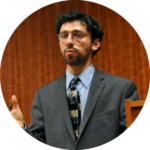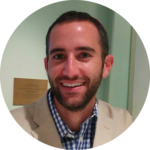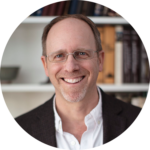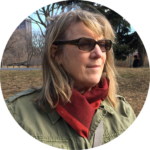Berlin

First Jewish presence: 1225; peak Jewish population: 173,000 in 1925; Jewish population in 1933: unknown.
The Middle Ages
Berlin’s Jewish community, destined to become a center of Jewish religion and culture, was inconspicuous until the beginning of the 18th century. During the Middle Ages, Berlin’s Jews shared the fate of Jews in other parts of Germany: expulsion during the Black Death pogroms, readmission, further persecutions and, again, readmission under repressive conditions. Arguably, the community’s history commenced when the Elector of Brandenburg permitted several well- off families from Vienna’s expelled Jewish community to settle in Berlin (1671) and furnished them with letters of protection. A cemetery was purchased in 1672, and the first burial society, the Gemillus Chasodim, was founded in 1676. The community was not permitted to build a public synagogue until 1714, when the authorities relented and the first synagogue was inaugurated on Heidereutergasse (on New Year’s Day, 1714) in the presence of members of the royal court. Rise of a Jewish Metropolis - In the early 18th century, the legal status of the community was revised to include measures designed to extract exorbitant fees from its members. At the instigation of the merchant guilds, stringent regulations were introduced—limiting Jewish population growth, imposing penalties for the birth of additional children and restricting the inheritance of wealth—that created an atmosphere in which only successful Jews could survive; these included bankers, wholesalers, manufacturers and some army contractors of the Seven Years’ War. Further changes were set in motion by the arrival in Berlin, in 1743, of Moses Mendelssohn, a young Talmud student from Dessau who soon established himself as an expert in the liberal arts. Acclaimed by the leading Gentile thinkers of the day, he aimed to modernize Jewish identity. In order to help Jewish community to master the German language, as opposed to the Yiddish to which it was accustomed, he translated the Hebrew Bible into German written in Hebrew letters. Even though he was hailed by many, his ideas on education came under suspicion after his death in 1780, when many Jews converted to Christianity. However, Mendelssohn’s doctrine of combining secular and traditional studies had a lasting impact on Germany’s Jews. The first Reform synagogue, established by Israel Jacobson in 1810, was shut down by government authorities strongly suspicious of new “cults.” Still, Leopold Zunz and Edward Ganz managed to establish an association and a periodical, efforts that contributed to the establishment of a Reform congregation incorporating organ music, a vernacular service and the substitution of Sunday for Saturday as the day of rest. Samuel Holdheim became the leader of the Reform congregation in 1847. The wave of conversions to Christianity continued steadily, but this was offset by the influx of Jewish newcomers from Silesia, West Prussia and Posen who hailed from traditional backgrounds. Accordingly, the Jewish population grew from 3,000 to 8,000 during this period. The majority gravitated towards the liberal interpretation of Judaism; the Oranienburger Strasse synagogue, opened in 1866 in the presence of Count von Bismarck, installed Abraham Geiger, a distinguished scholar in the Mendelssohn mold, as rabbi, after which the Orthodox minority broke away and founded the Adass Yisroel association in 1869. With 300 original members and Rabbi Azriel Hildersheimer at the helm, Adass Yisroel eventually became Germany’s largest Orthodox community. The constitutional changes of March 1848 removed all restrictions on German Jews. Many Jews accordingly flourished, triggering a backlash of anti-Semitism, in response to which the community founded the Central Association of German Citizens of Jewish Faith. New arrivals poured into Berlin and the population quadrupled from 36,000 in 1871 to 142,000 in 1910. The newcomers (often treated condescendingly by the more established Jews) tended to congregate in the Scheinviertel area, creating their own milieu of Yiddish-speaking grocers, merchants and butchers. The upper classes continued to thrive in an array of professions. Intermarriage was common among more successful Jews, constituting 27% of all Jewish marriages in 1900, 34% in 1921 and 45% in 1929.
Postwar Consolidation
In 1929, the community employed over 1,500 individuals and maintained 12 large synagogues (each accommodating an average of 2,000 people), as well as several smaller synagogues. Twenty synagogues were maintained by associations or private individuals, and numerous prayer halls (shtibel) were run by Eastern European immigrants. The community also maintained schools, ritual baths, libraries, a museum, a hospital, an orphanage, old-age homes, cemeteries and afterschool courses in religion. Forty-eight evening classes in religion were available for those children, the majority, who did not attend Jewish schools. The Abraham Geiger High School for Jewish Studies, founded in 1872—Martin Buber, Leo Baeck and Solomon Schechter taught there—and the Hildersheimer Rabbinical Seminary, founded in 1873 and made famous by David Zvi Hoffman and Yaacov Jehiel Weinberg, boasted outstanding academic reputations. The community was socially-minded: In addition to the Central Association, there were the war veterans’ and women’s groups, youth and sports clubs, cultural groups and Zionist clubs. Many periodicals were published, mostly in German, but also in Yiddish and Hebrew. The oft-ostracized Ostjuden (Jews of Eastern European descent), who by this point constituted a considerable chunk of the community, operated many of their own social clubs. The Nazi Period - Despite widespread Jewish participation in Germany’s defense during World War I, resulting in a disproportionately high number of Jewish deaths in combat and awards to Jews for gallantry, anti-Semites blamed the defeat and subsequent economic hardships on the Jews. The Nazi party, flush with its victories in the Reichstag election of 1933, instituted a boycott of Jewish businesses and removed Jews from all strata of society: Department stores were placarded with anti-Jewish signs; contracts involving Jews were nullified; Jewish professionals, academics and state employees were removed from their positions; and schoolchildren and students were expelled from schools and universities. The community tried valiantly to alleviate the ensuing suffering by setting up schools, assisting the families of the unemployed and preparing Jews for emigration. In November of 1938, after a young Jewish student in Paris, incensed by the ill-treatment of his parents in Germany, shot and killed an official of the German embassy there, the Nazis unleashed a wave of violence against the Jews of Germany: Synagogues were wrecked or destroyed, homes were broken into and frightened children looked on as thugs smashed thousands of windows, giving rise to the naming of this nationwide pogrom as Kristallnacht (the Night of Broken Glass). As restrictions, harassments and summary arrests became the order of the day, Jews tried desperately to leave the country. When war broke out, however, 83,000 Jews still lived in Berlin; some were permitted to leave for neutral destinations, but the deportations to the concentration and death camps claimed most. Approximately 5,000 Jews, hidden and protected by Gentile spouses, survived the war in Berlin. Some 35,000 died in the camps; others died from starvation or sickness; and still others committed suicide. The last transport left Berlin in March 1945.
Rebirth and Renewal
Within five days of Germany’s defeat, the first postwar public Jewish service was held in Berlin. The few survivors were joined by nearly 2,000 survivors of the concentration camps (mostly from Theresienstadt, where conditions were less horrific than those further east). In February 1946, the official Jewish community was reestablished, and three intact synagogues were refurbished. Many of the returnees, broken by their experiences, left Germany, but their numbers were replenished by DPs (Displaced Persons) and, much later, by immigrants from the former USSR. (Russian speakers make up half of the present-day Jewish community in Berlin.) The community now maintains seven synagogues, two ritual baths, a yeshiva, a school, adult education classes, a library and a new Jewish museum, the last of which was designed by Daniel Libeskind. Two landmark events were the rebuilding of the Orianenburger Strasse synagogue and the unveiling of the controversial Shoah memorial designed by Peter Eisenman. Berlin is arguably home to the fastest-growing Jewish community in the Diaspora.  The Middle Ages - Berlin’s Jewish community, destined to become a center of Jewish religion and culture, was inconspicuous until the beginning of the 18th century. During the Middle Ages, Berlin’s Jews shared the fate of Jews in other parts of Germany: expulsion during the Black Death pogroms, readmission, further persecutions and, again, readmission under repressive conditions. Arguably, the community’s history commenced when the Elector of Brandenburg permitted several well- off families from Vienna’s expelled Jewish community to settle in Berlin (1671) and furnished them with letters of protection. A cemetery was purchased in 1672, and the first burial society, the Gemillus Chasodim, was founded in 1676. The community was not permitted to build a public synagogue until 1714, when the authorities relented and the first synagogue was inaugurated on Heidereutergasse (on New Year’s Day, 1714) in the presence of members of the royal court. Rise of a Jewish Metropolis - In the early 18th century, the legal status of the community was revised to include measures designed to extract exorbitant fees from its members. At the instigation of the merchant guilds, stringent regulations were introduced—limiting Jewish population growth, imposing penalties for the birth of additional children and restricting the inheritance of wealth—that created an atmosphere in which only successful Jews could survive; these included bankers, wholesalers, manufacturers and some army contractors of the Seven Years’ War. Further changes were set in motion by the arrival in Berlin, in 1743, of Moses Mendelssohn, a young Talmud student from Dessau who soon established himself as an expert in the liberal arts. Acclaimed by the leading Gentile thinkers of the day, he aimed to modernize Jewish identity. In order to help Jewish community to master the German language, as opposed to the Yiddish to which it was accustomed, he translated the Hebrew Bible into German written in Hebrew letters. Even though he was hailed by many, his ideas on education came under suspicion after his death in 1780, when many Jews converted to Christianity. However, Mendelssohn’s doctrine of combining secular and traditional studies had a lasting impact on Germany’s Jews. The first Reform synagogue, established by Israel Jacobson in 1810, was shut down by government authorities strongly suspicious of new “cults.” Still, Leopold Zunz and Edward Ganz managed to establish an association and a periodical, efforts that contributed to the establishment of a Reform congregation incorporating organ music, a vernacular service and the substitution of Sunday for Saturday as the day of rest. Samuel Holdheim became the leader of the Reform congregation in 1847. The wave of conversions to Christianity continued steadily, but this was offset by the influx of Jewish newcomers from Silesia, West Prussia and Posen who hailed from traditional backgrounds. Accordingly, the Jewish population grew from 3,000 to 8,000 during this period. The majority gravitated towards the liberal interpretation of Judaism; the Oranienburger Strasse synagogue, opened in 1866 in the presence of Count von Bismarck, installed Abraham Geiger, a distinguished scholar in the Mendelssohn mold, as rabbi, after which the Orthodox minority broke away and founded the Adass Yisroel association in 1869. With 300 original members and Rabbi Azriel Hildersheimer at the helm, Adass Yisroel eventually became Germany’s largest Orthodox community. The constitutional changes of March 1848 removed all restrictions on German Jews. Many Jews accordingly flourished, triggering a backlash of anti-Semitism, in response to which the community founded the Central Association of German Citizens of Jewish Faith. New arrivals poured into Berlin and the population quadrupled from 36,000 in 1871 to 142,000 in 1910. The newcomers (often treated condescendingly by the more established Jews) tended to congregate in the Scheinviertel area, creating their own milieu of Yiddish-speaking grocers, merchants and butchers. The upper classes continued to thrive in an array of professions. Intermarriage was common among more successful Jews, constituting 27% of all Jewish marriages in 1900, 34% in 1921 and 45% in 1929. Postwar Consolidation - In 1929, the community employed over 1,500 individuals and maintained 12 large synagogues (each accommodating an average of 2,000 people), as well as several smaller synagogues. Twenty synagogues were maintained by associations or private individuals, and numerous prayer halls (shtibel) were run by Eastern European immigrants. The community also maintained schools, ritual baths, libraries, a museum, a hospital, an orphanage, old-age homes, cemeteries and afterschool courses in religion. Forty-eight evening classes in religion were available for those children, the majority, who did not attend Jewish schools. The Abraham Geiger High School for Jewish Studies, founded in 1872—Martin Buber, Leo Baeck and Solomon Schechter taught there—and the Hildersheimer Rabbinical Seminary, founded in 1873 and made famous by David Zvi Hoffman and Yaacov Jehiel Weinberg, boasted outstanding academic reputations. The community was socially-minded: In addition to the Central Association, there were the war veterans’ and women’s groups, youth and sports clubs, cultural groups and Zionist clubs. Many periodicals were published, mostly in German, but also in Yiddish and Hebrew. The oft-ostracized Ostjuden (Jews of Eastern European descent), who by this point constituted a considerable chunk of the community, operated many of their own social clubs. The Nazi Period - Despite widespread Jewish participation in Germany’s defense during World War I, resulting in a disproportionately high number of Jewish deaths in combat and awards to Jews for gallantry, anti-Semites blamed the defeat and subsequent economic hardships on the Jews. The Nazi party, flush with its victories in the Reichstag election of 1933, instituted a boycott of Jewish businesses and removed Jews from all strata of society: Department stores were placarded with anti-Jewish signs; contracts involving Jews were nullified; Jewish professionals, academics and state employees were removed from their positions; and schoolchildren and students were expelled from schools and universities. The community tried valiantly to alleviate the ensuing suffering by setting up schools, assisting the families of the unemployed and preparing Jews for emigration. In November of 1938, after a young Jewish student in Paris, incensed by the ill-treatment of his parents in Germany, shot and killed an official of the German embassy there, the Nazis unleashed a wave of violence against the Jews of Germany: Synagogues were wrecked or destroyed, homes were broken into and frightened children looked on as thugs smashed thousands of windows, giving rise to the naming of this nationwide pogrom as Kristallnacht (the Night of Broken Glass). As restrictions, harassments and summary arrests became the order of the day, Jews tried desperately to leave the country. When war broke out, however, 83,000 Jews still lived in Berlin; some were permitted to leave for neutral destinations, but the deportations to the concentration and death camps claimed most. Approximately 5,000 Jews, hidden and protected by Gentile spouses, survived the war in Berlin. Some 35,000 died in the camps; others died from starvation or sickness; and still others committed suicide. The last transport left Berlin in March 1945. Rebirth and Renewal - Within five days of Germany’s defeat, the first postwar public Jewish service was held in Berlin. The few survivors were joined by nearly 2,000 survivors of the concentration camps (mostly from Theresienstadt, where conditions were less horrific than those further east). In February 1946, the official Jewish community was reestablished, and three intact synagogues were refurbished. Many of the returnees, broken by their experiences, left Germany, but their numbers were replenished by DPs (Displaced Persons) and, much later, by immigrants from the former USSR. (Russian speakers make up half of the present-day Jewish community in Berlin.) The community now maintains seven synagogues, two ritual baths, a yeshiva, a school, adult education classes, a library and a new Jewish museum, the last of which was designed by Daniel Libeskind. Two landmark events were the rebuilding of the Orianenburger Strasse synagogue and the unveiling of the controversial Shoah memorial designed by Peter Eisenman. Berlin is arguably home to the fastest-growing Jewish community in the Diaspora.  The Middle Ages - Berlin’s Jewish community, destined to become a center of Jewish religion and culture, was inconspicuous until the beginning of the 18th century. During the Middle Ages, Berlin’s Jews shared the fate of Jews in other parts of Germany: expulsion during the Black Death pogroms, readmission, further persecutions and, again, readmission under repressive conditions. Arguably, the community’s history commenced when the Elector of Brandenburg permitted several well- off families from Vienna’s expelled Jewish community to settle in Berlin (1671) and furnished them with letters of protection. A cemetery was purchased in 1672, and the first burial society, the Gemillus Chasodim, was founded in 1676. The community was not permitted to build a public synagogue until 1714, when the authorities relented and the first synagogue was inaugurated on Heidereutergasse (on New Year’s Day, 1714) in the presence of members of the royal court. Rise of a Jewish Metropolis - In the early 18th century, the legal status of the community was revised to include measures designed to extract exorbitant fees from its members. At the instigation of the merchant guilds, stringent regulations were introduced—limiting Jewish population growth, imposing penalties for the birth of additional children and restricting the inheritance of wealth—that created an atmosphere in which only successful Jews could survive; these included bankers, wholesalers, manufacturers and some army contractors of the Seven Years’ War. Further changes were set in motion by the arrival in Berlin, in 1743, of Moses Mendelssohn, a young Talmud student from Dessau who soon established himself as an expert in the liberal arts. Acclaimed by the leading Gentile thinkers of the day, he aimed to modernize Jewish identity. In order to help Jewish community to master the German language, as opposed to the Yiddish to which it was accustomed, he translated the Hebrew Bible into German written in Hebrew letters. Even though he was hailed by many, his ideas on education came under suspicion after his death in 1780, when many Jews converted to Christianity. However, Mendelssohn’s doctrine of combining secular and traditional studies had a lasting impact on Germany’s Jews. The first Reform synagogue, established by Israel Jacobson in 1810, was shut down by government authorities strongly suspicious of new “cults.” Still, Leopold Zunz and Edward Ganz managed to establish an association and a periodical, efforts that contributed to the establishment of a Reform congregation incorporating organ music, a vernacular service and the substitution of Sunday for Saturday as the day of rest. Samuel Holdheim became the leader of the Reform congregation in 1847. The wave of conversions to Christianity continued steadily, but this was offset by the influx of Jewish newcomers from Silesia, West Prussia and Posen who hailed from traditional backgrounds. Accordingly, the Jewish population grew from 3,000 to 8,000 during this period. The majority gravitated towards the liberal interpretation of Judaism; the Oranienburger Strasse synagogue, opened in 1866 in the presence of Count von Bismarck, installed Abraham Geiger, a distinguished scholar in the Mendelssohn mold, as rabbi, after which the Orthodox minority broke away and founded the Adass Yisroel association in 1869. With 300 original members and Rabbi Azriel Hildersheimer at the helm, Adass Yisroel eventually became Germany’s largest Orthodox community. The constitutional changes of March 1848 removed all restrictions on German Jews. Many Jews accordingly flourished, triggering a backlash of anti-Semitism, in response to which the community founded the Central Association of German Citizens of Jewish Faith. New arrivals poured into Berlin and the population quadrupled from 36,000 in 1871 to 142,000 in 1910. The newcomers (often treated condescendingly by the more established Jews) tended to congregate in the Scheinviertel area, creating their own milieu of Yiddish-speaking grocers, merchants and butchers. The upper classes continued to thrive in an array of professions. Intermarriage was common among more successful Jews, constituting 27% of all Jewish marriages in 1900, 34% in 1921 and 45% in 1929. Postwar Consolidation - In 1929, the community employed over 1,500 individuals and maintained 12 large synagogues (each accommodating an average of 2,000 people), as well as several smaller synagogues. Twenty synagogues were maintained by associations or private individuals, and numerous prayer halls (shtibel) were run by Eastern European immigrants. The community also maintained schools, ritual baths, libraries, a museum, a hospital, an orphanage, old-age homes, cemeteries and afterschool courses in religion. Forty-eight evening classes in religion were available for those children, the majority, who did not attend Jewish schools. The Abraham Geiger High School for Jewish Studies, founded in 1872—Martin Buber, Leo Baeck and Solomon Schechter taught there—and the Hildersheimer Rabbinical Seminary, founded in 1873 and made famous by David Zvi Hoffman and Yaacov Jehiel Weinberg, boasted outstanding academic reputations. The community was socially-minded: In addition to the Central Association, there were the war veterans’ and women’s groups, youth and sports clubs, cultural groups and Zionist clubs. Many periodicals were published, mostly in German, but also in Yiddish and Hebrew. The oft-ostracized Ostjuden (Jews of Eastern European descent), who by this point constituted a considerable chunk of the community, operated many of their own social clubs. The Nazi Period - Despite widespread Jewish participation in Germany’s defense during World War I, resulting in a disproportionately high number of Jewish deaths in combat and awards to Jews for gallantry, anti-Semites blamed the defeat and subsequent economic hardships on the Jews. The Nazi party, flush with its victories in the Reichstag election of 1933, instituted a boycott of Jewish businesses and removed Jews from all strata of society: Department stores were placarded with anti-Jewish signs; contracts involving Jews were nullified; Jewish professionals, academics and state employees were removed from their positions; and schoolchildren and students were expelled from schools and universities. The community tried valiantly to alleviate the ensuing suffering by setting up schools, assisting the families of the unemployed and preparing Jews for emigration. In November of 1938, after a young Jewish student in Paris, incensed by the ill-treatment of his parents in Germany, shot and killed an official of the German embassy there, the Nazis unleashed a wave of violence against the Jews of Germany: Synagogues were wrecked or destroyed, homes were broken into and frightened children looked on as thugs smashed thousands of windows, giving rise to the naming of this nationwide pogrom as Kristallnacht (the Night of Broken Glass). As restrictions, harassments and summary arrests became the order of the day, Jews tried desperately to leave the country. When war broke out, however, 83,000 Jews still lived in Berlin; some were permitted to leave for neutral destinations, but the deportations to the concentration and death camps claimed most. Approximately 5,000 Jews, hidden and protected by Gentile spouses, survived the war in Berlin. Some 35,000 died in the camps; others died from starvation or sickness; and still others committed suicide. The last transport left Berlin in March 1945. Rebirth and Renewal - Within five days of Germany’s defeat, the first postwar public Jewish service was held in Berlin. The few survivors were joined by nearly 2,000 survivors of the concentration camps (mostly from Theresienstadt, where conditions were less horrific than those further east). In February 1946, the official Jewish community was reestablished, and three intact synagogues were refurbished. Many of the returnees, broken by their experiences, left Germany, but their numbers were replenished by DPs (Displaced Persons) and, much later, by immigrants from the former USSR. (Russian speakers make up half of the present-day Jewish community in Berlin.) The community now maintains seven synagogues, two ritual baths, a yeshiva, a school, adult education classes, a library and a new Jewish museum, the last of which was designed by Daniel Libeskind. Two landmark events were the rebuilding of the Orianenburger Strasse synagogue and the unveiling of the controversial Shoah memorial designed by Peter Eisenman. Berlin is arguably home to the fastest-growing Jewish community in the Diaspora. 
Harold Zvi Slutzkin
Copyright: Pogrom Night 1938 - A Memorial to the Destroyed Synagogues of Germany/germansynagogues.bh.org.il
Notes
Sources: Encyclopedia Judaica (First Edition), Cecil Roth and Geoffery Wigoder [Eds.], [Publisher] Keter Publishing House, Jerusalem and Macmillan Company, New York., The Encyclopedia of Jewish Life Before and During the Holocaust, Shmuel Spector [Ed.], [publisher] Yad Vashem and the New York University Press, 2001., Guide to Jewish Berlin: History and the Present, Vera Bendt, Nicola Galliner Thomas Jersch, Stefi Jersch-Wenzel, Carolin Hilker-Siebenhaar [Ed.], [Publisher] Verlag Nicolai, 1987.
Details
| Date Added | Jan 22, 2020 |
|---|---|
| Category | Residential |
| Country | DE |
| State | Berlin |
| City | Berlin |
| Exhibits | Pogrom Night 1938 - A Memorial to the Destroyed Synagogues of Germany |
Have additional information, photos, connections, or other resources to contribute?
Help Us in the race against time to time document Jewish history!






